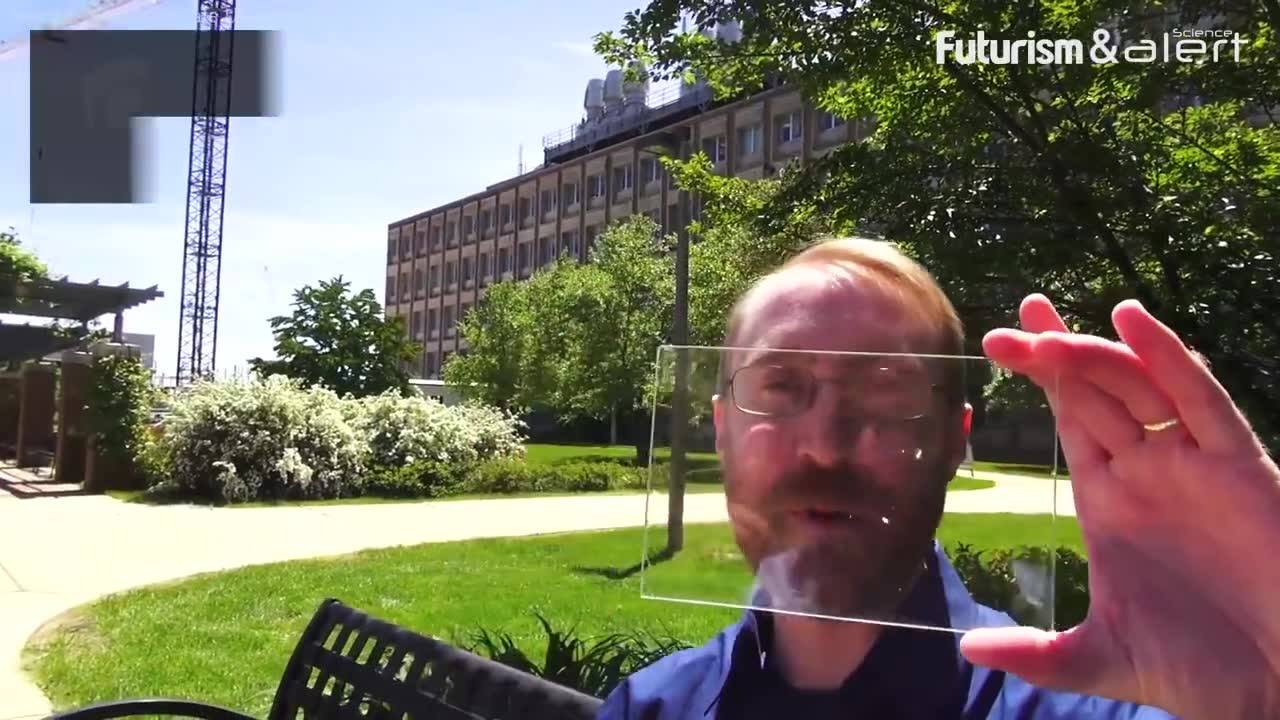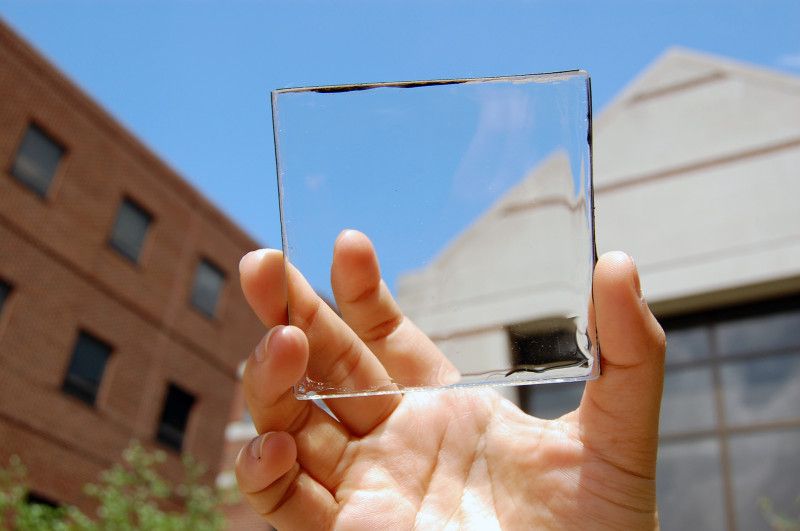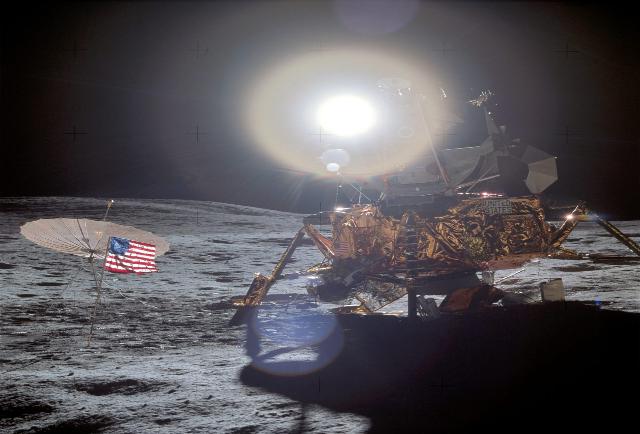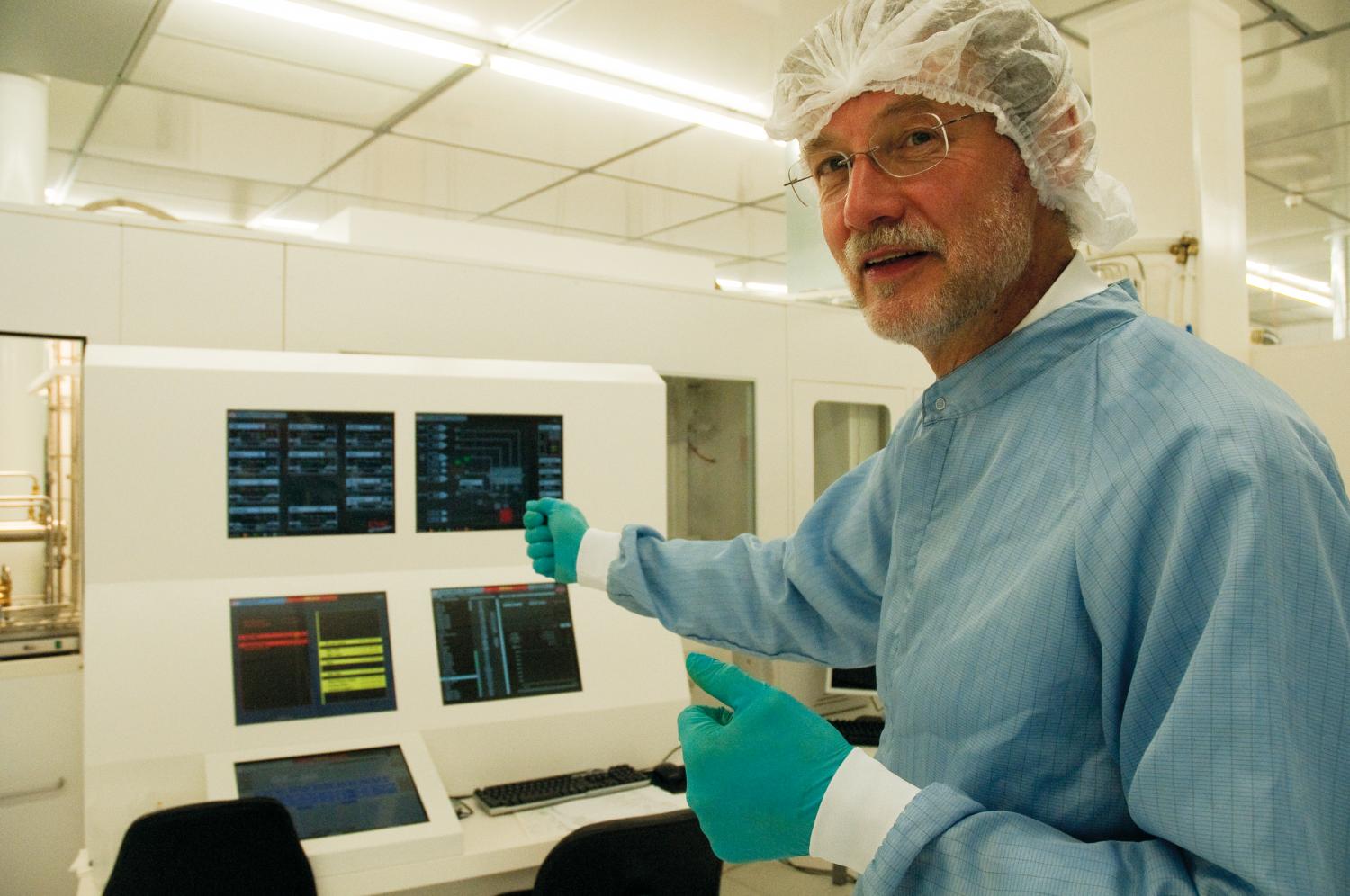Orbital manufacturing is already paving the way for better solar panels, faster internet, cleaner computer chips, and lab-grown human hearts.




Back in August 2014, researchers at Michigan State University created a fully transparent solar concentrator, which could turn any window or sheet of glass (like your smartphone’s screen) into a photovoltaic solar cell. Unlike other “transparent” solar cells that we’ve reported on in the past, this one really is transparent, as you can see in the photos throughout this story. According to Richard Lunt, who led the research at the time, the team was confident the transparent solar panels can be efficiently deployed in a wide range of settings, from “tall buildings with lots of windows or any kind of mobile device that demands high aesthetic quality like a phone or e-reader.”
Now Ubiquitous Energy, an MIT startup we first reported on in 2013, is getting closer to bringing its transparent solar panels to market. Lunt cofounded the company and remains assistant professor of chemical engineering and materials science at Michigan State University. Essentially, what they’re doing is instead of shrinking the components, they’re changing the way the cell absorbs light. The cell selectively harvests the part of the solar spectrum we can’t see with our eye, while letting regular visible light pass through.
Scientifically, a transparent solar panel is something of an oxymoron. Solar cells, specifically the photovoltaic kind, make energy by absorbing photons (sunlight) and converting them into electrons (electricity). If a material is transparent, however, by definition it means that all of the light passes through the medium to strike the back of your eye. This is why previous transparent solar cells have actually only been partially transparent — and, to add insult to injury, they usually they cast a colorful shadow too.


Solar power is potentially the greatest single energy source outside of controlled nuclear fusion, but the Sun is literally a fair weather source that relies on daytime and clear skies. To make solar energy a reliable, 24-hour source of energy, a team of scientists at Sweden’s Chalmers University of Technology in Gothenburg is developing a liquid energy storage medium that can not only release energy from the Sun on demand, but is also transportable.
The Chalmers team has been working on variants of its system, called a MOlecular Solar Thermal (MOST), for over six years, with a conceptual demonstration in 2013. It differs from other attempts to store solar energy in things like heated salts and reversing exothermic reactions in that the MOST system stores the energy directly in the bonds of an organic chemical.
Join more than 500 New Atlas Plus subscribers who read our newsletter and website without ads.


In the future, solar cells can become twice as efficient by employing a few smart little nano-tricks.
Researchers are currently developing the environment-friendly solar cells of the future, which will capture twice as much energy as the cells of today. The trick is to combine two different types of solar cells in order to utilize a much greater portion of the sunlight.
“These are going to be the world’s most efficient and environment-friendly solar cells. There are currently solar cells that are certainly just as efficient, but they are both expensive and toxic. Furthermore, the materials in our solar cells are readily available in large quantities on Earth. That is an important point,” says Professor Bengt Svensson of the Department of Physics at the University of Oslo (UiO) and Centre for Materials Science and Nanotechnology (SMN).

[youtube_sc url=“https://www.youtube.com/watch?v=ib1KKHGYmLQ”]
“Two Tesla Motors veterans want to build a European counterpart to Elon Musk’s “gigafactory”, in an effort to stake out a dominant position in the fast-evolving supply chain for makers of electric vehicles.”

“The industry reports that, for the first time ever, solar was the number one source of new generating capacity, beating out wind and gas.”